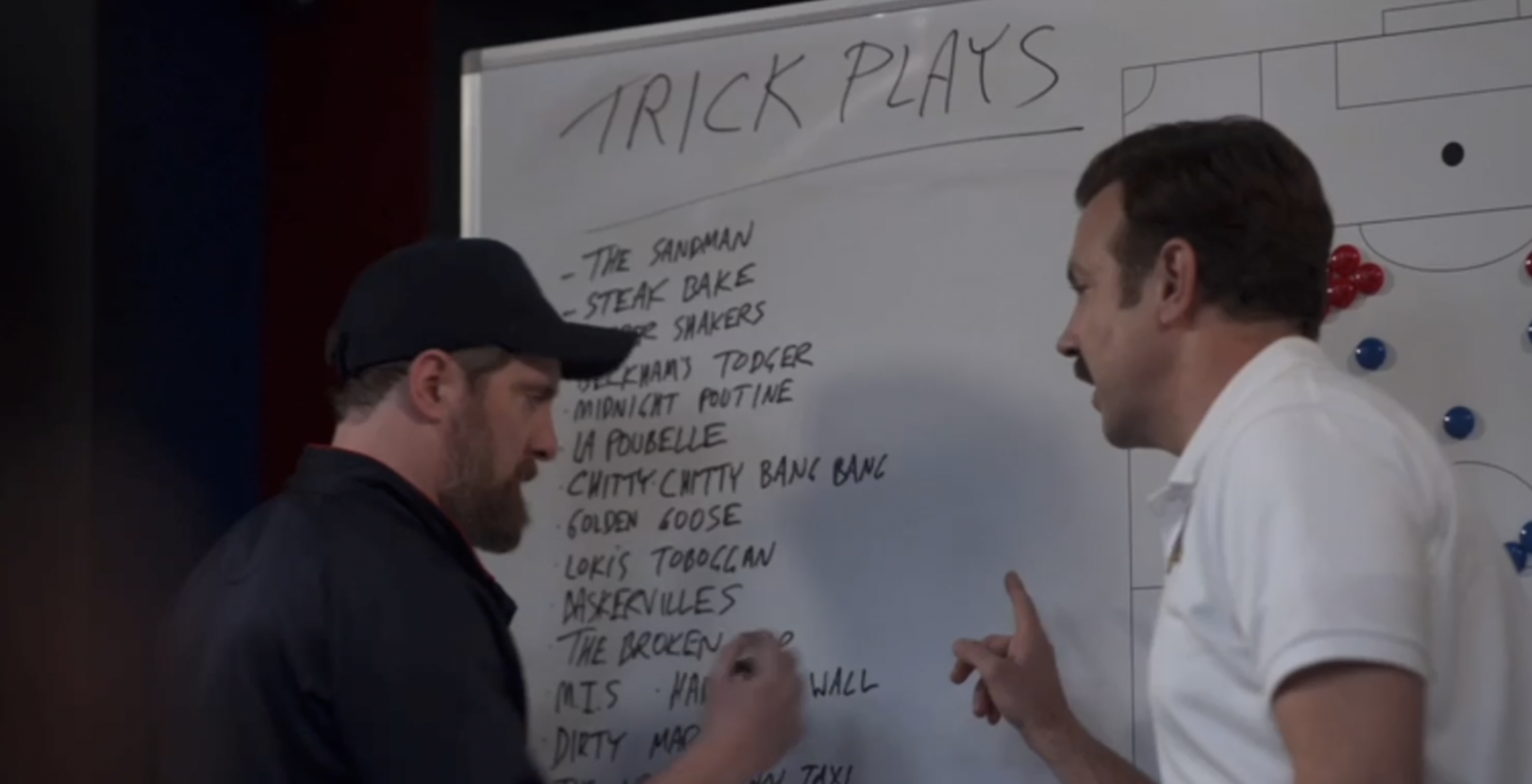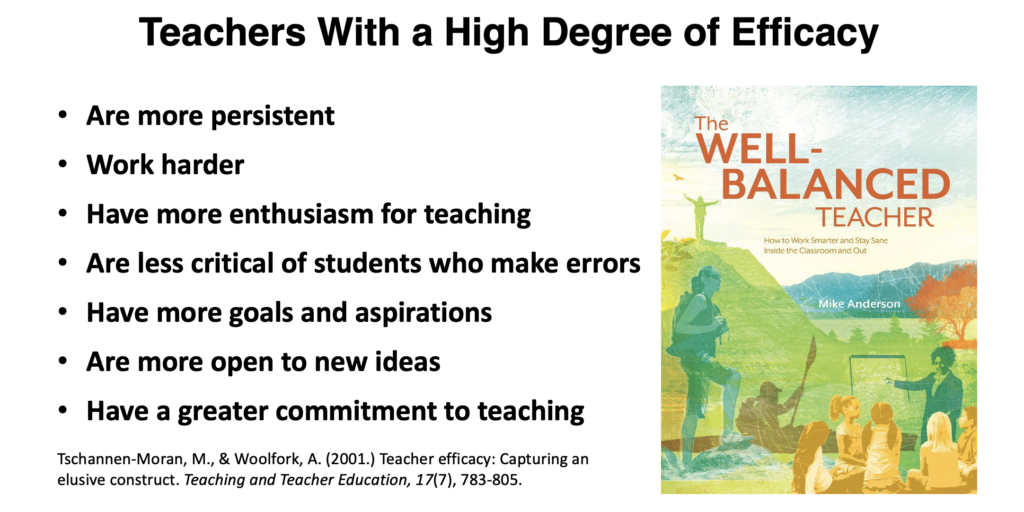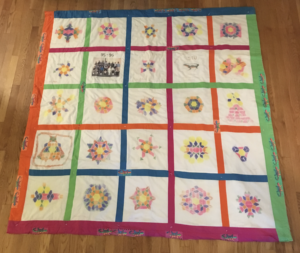3 Planning Moves to Reenergize Your Teaching

In the final episode of Season I of Ted Lasso, players are somber and nervous heading into a do-or-die match against a superior team. Ted decides they all need to try something new, so he invites the players to name trick plays that might create chaos on the field and enable them to eke out a win. As players shout out suggestions (“The Sandman!” “Midnight Poutine!” “Loki’s Taboggan!” “Dirty Martini!”), the energy in the room picks up. Coaches and players are energized through the creative process of planning. Spirits high, they charge out of the locker room to learn the new plays.
This is a good reminder in the age of scripted programs and rigid curricular guides. Creative planning can lead to great energy. Too often, teachers are handed a manual and told what to teach. We lose the energy, enthusiasm, and motivation that comes with planning a cool lesson or designing a great unit. This can actually lead us to teach with less energy. After all, how emotionally invested can we be as we teach a lesson someone else designed? And if we’re not emotionally invested in our teaching, how could kids possibly be emotionally invested in their learning?
If we’re not emotionally invested in our teaching, how can our students be emotionally invested in their learning?
Teacher autonomy and a sense of competence are fundamental needs for educators. When we have a sense of efficacy, there are all kinds of important benefits for our students.

Scripted Programs Rob Us of Emotional Investment
When my district adopted a math program, I’ll admit I was relieved at first. All of a sudden, I had all of my math lessons ready to go before the year started. Just think of all of the time that would save me when it came time to planning! And it was nice.
But there were downsides.
In part because I knew I was “supposed to” follow the program, I often delivered the lessons as they were written—without a back-up plan for what to do if things went sideways. That didn’t happen when I created my own lessons. I’d often have questions about my own lessons. Will three examples be enough, or should I have a few more ready to go—just in case?
Another problem was that it was too easy to fly by the seat of my pants when math time rolled around. I spent more of my planning time on reading and writing lessons, figuring I could skim the math lesson just before I taught it. That meant I didn’t invest enough time before teaching the lesson to really think it through.
Perhaps most importantly (tragically), what I lost was emotional investment in the teaching of math. Following someone else’s plans just wasn’t as motivational as following my own. I cracked fewer jokes and made fewer personal connections through examples as I taught. Since I didn’t create the content, I didn’t care about it as much. For the first time in my career, I started to hear students groan as math time rolled around. I was quietly groaning myself.
3 Planning Moves to Regain Our Autonomy and Passion for Teaching
So how do we recapture some of our autonomy–even if we are handed a program or curricular guide that we’re supposed to use?
Here are three ideas to try.
1. Use Programs as a Starting Point
 I broke out of my own math rut when I moved back to creating my own units and lessons. I’d use the program as a starting point. I’d often use lessons that were provided—sometimes using them as-is and sometimes adjusting and adapting them so they better fit my students. Sometimes I’d come up with a cool project in place of a unit. I’d still teach the same competencies, but we’d design zoo enclosures as our measurement unit or create a quilt to explore geometry.
I broke out of my own math rut when I moved back to creating my own units and lessons. I’d use the program as a starting point. I’d often use lessons that were provided—sometimes using them as-is and sometimes adjusting and adapting them so they better fit my students. Sometimes I’d come up with a cool project in place of a unit. I’d still teach the same competencies, but we’d design zoo enclosures as our measurement unit or create a quilt to explore geometry.
(When I share ideas like this with teachers, they’ll sometimes worry about “getting in trouble” for not sticking with the program. My response is, “Are students still learning the competencies? That’s what’s most important. I’ve never heard of a teacher bring fired for making teaching and learning better.”)
Here’s another example of what this can look like. A group of third grade teachers in Keene, NH created a list of independent activities students could choose from which complimented the phonics lessons they were teaching. They taught the lessons as they were written to smaller groups (instead of the whole class at once) and when students weren’t with the teacher, they worked on one of these choice activities. You can read a more thorough explanation of the process they used here: Can Teachers Offer Choice in the Midst of Scripted Programs?
2. Co-Create Learning Activities with Your Students
You might follow Ted Lasso’s lead and invite your students to come up with ideas for how to make learning awesome.
A sixth grade teacher I was working with wanted to improve the vocabulary work they were doing. All students needed to learn the same words—which came out of the math curriculum they were using. He invited his students to come up with ways they could learn the vocabulary words, and they came up with some great ideas: creating crossword puzzles, drawing infographics, and creating simple picture books were a few. Two students decided to write and perform scripts for a talk show (Meet that Number!) with the vocabulary words embedded in the scripts. You can read more and see a video of one of the performances here: Letting Students Make the Choice.
3. Don’t Rely on Teachers Pay Teachers
You’re about to teach a lesson, and you need a practice set of problems for students to solve. Should you create them yourself or search for one on a site like Teachers Pay Teachers? We may think we can save time by finding a resource someone else has created. Why recreate the wheel, right? There are a couple of potential problems with this, however.
I’ve gone down this rabbit hole myself, and sometimes I spend so much time looking for a resource that’s already made, that I could have made one myself more quickly.
Also, when we make a resource ourselves, we can keep our specific students in mind. We can craft sample problems to the range of needs in our room and throw in little jokes to keep students engaged. (Shane enjoys mealworms on his cereal. They’re packed with protein, and he likes the way they wiggle on the way down. If Shane eats 347 mealworms each morning for a week, how many mealworms has he eaten?) We can choose reading materials that our students can actually read (as opposed to materials chosen by a publishing company based on their vision of what students this age should be able to read).
Plus, when we create the materials ourselves, we’re more emotionally invested in the work. We fiddle with fonts to make the title look good. We attend to word choice and imagine our students trying it out. This time and attention is important. We care more about what we’re doing when we create it ourselves.
When we reclaim some of our teacher autonomy and take a more active role in planning learning events for our students, we’ll be reenergized and our students will be too!
Author
-
Mike Anderson has been an educator for many years. A public school teacher for 15 years, he has also taught preschool, coached swim teams, and taught university graduate level classes. He now works as a consultant providing professional learning for teachers throughout the US and beyond. In 2004, Mike was awarded a national Milken Educator Award, and in 2005 he was a finalist for NH Teacher of the Year. In 2020, he was awarded the Outstanding Educational Leader Award by NHASCD for his work as a consultant. A best-selling author, Mike has written ten books about great teaching and learning. His latest book is Rekindle Your Professional Fire: Powerful Habits for Becoming a More Well-Balanced Teacher. When not working, Mike can be found hanging with his family, tending his perennial gardens, and searching for new running routes around his home in Durham, NH.
- Share:
You may also like

Three Ways to Rekindle Teachers’ Professional Fires
- March 20, 2025
- by Mike Anderson
- in Health and Balance

The Perfect Breakfast for Teachers


